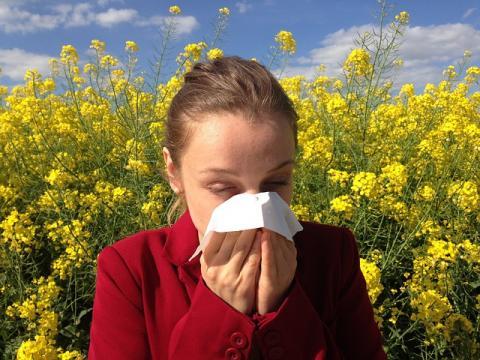
Allergy season is here! Itchy watery eyes combined with sneezing and a stuffy nose can really be a drag. Today’s walk through Mother Earth’s Medicine Cabinet will take us through a small section of natural antihistamines to help you through allergy season.
Before we take a look at what natural remedies there are, let’s first look at what histamines are and how they affect us. Histamine is a natural chemical created by our very own immune system. It is like a defensive army sent out by the immune system to protect us against invaders. In this case, the Histamine Militia is protecting us from allergies like pollen, dust, dander, poison ivy, etc.
The natural histamine in our body has one job and that’s to remove the allergens. Unfortunately, allergens are removed by sneezing, watery eyes, coughing, and basically anything that will push them out. Our immune system views the allergens as a threat and responds. It is meant to keep us safe, yes, but sometimes it overreacts and causes irritation, inflammation, headaches, rashes, or welts.
7 Natural Antihistamines
Antihistamines reduce and calm the histamines that can overreact. This allows us to breathe easy, free, and clear again.
- Stinging Nettle (Urtica dioica): There is a homeopathic theory that states “Like Cures Like.” This means that sometimes the very thing that can cause a reaction can cure it as well. For instance, the little spiky hairs of the stinging nettle plant can sometimes cause hives because those little hairs actually inject histamine into the body. Stinging Nettle is also used to treat hives. A tea can be made using the leaves or you can cook the leaves up like greens and eat them -- either way, it can be beneficial. The hairs lose their histamine properties when cooked. Note: If you have a ragweed allergy this is not the best option for you.
- Chamomile (Matricaria chamomilla): Chamomile is loaded with rich antihistamine properties. You can make a poultice using the dried flowers applied directly to the irritated area. This works well for inflammation and swelling of hives and irritated skin. You can also make a tea and drink a cup in the morning, afternoon, and another at night before bed. The tea is delicious and also provides calming effects. Note: If you have a ragweed or daisy allergy this is not the best option for you.
- Basil (Ocimum sanctum): This fantastic and delicious herb has been used all throughout history for various ailments. A poultice can be used for wasp and bee stings, as well as venomous snakebites. The basil poultice has drawing properties that will draw out the poison, toxins, and stingers, all while calming the allergic reaction.
- Jewelweed (Impatiens capensis): Jewelweed contains a chemical compound called lawsone. Lawsone contains natural anti-inflammatory and antihistamine properties. The Jewelweed plant is useful for irritation caused by stinging nettle spines, poison ivy, and poison oak. The parts of the plant used are the leaves, as well as, the juice from the stems BEFORE they’ve begun flowering. The leaves make a poultice you can apply directly to poison ivy rashes. Some folk remedies say if you drink the leaf tea you can actually prevent poison ivy from occurring.
- Ginger (Zingiber officinale): Ginger root tea is an amazing remedy that works well for allergic reactions that cause welts and hives. All you have to do is take fresh ginger root and cut it into thin slices. Boil them in about 6-8 cups of water for 20 minutes. Allow the tea to steep for about half an hour and drink a cup sweetened with honey and a spritz of lemon 3 times a day.
- Thyme (Thymus vulgaris): Thyme is great for all sorts of healing and health. The essential oil extract contains antimicrobial properties that fight bacteria and fungus. It is also a natural antihistamine and antiseptic. It’s a great herb to add to your meals.
- Papaya: Papaya is a delicious fruit that packs a punch. The fruit prevents the secretion of the histamine our bodies create. Fresh papaya fruit and the juice can both be used and work well. If you have any skin irritation such as hives you can use a papaya poultice and apply it directly to the affected area.
Something that is always wise to do when dealing with allergy season is to increase your intake of Vitamin C. This will help your body’s immune system stay strong through the process and it will help you feel better.
I hope today’s walk through Mother Earth’s Medicine Cabinet finds you well! If you are one of the people out there suffering from allergies I hope there is something on this list that helps you find some comfort. It is ok to use a combination of these plants listed to help you through the allergy season. This is just a small list of things that can be used as natural antihistamines. Is there anything you’ve tried that’s not on this list that works? Please feel free to drop us a line in the comment section below and share your healing experience!!








